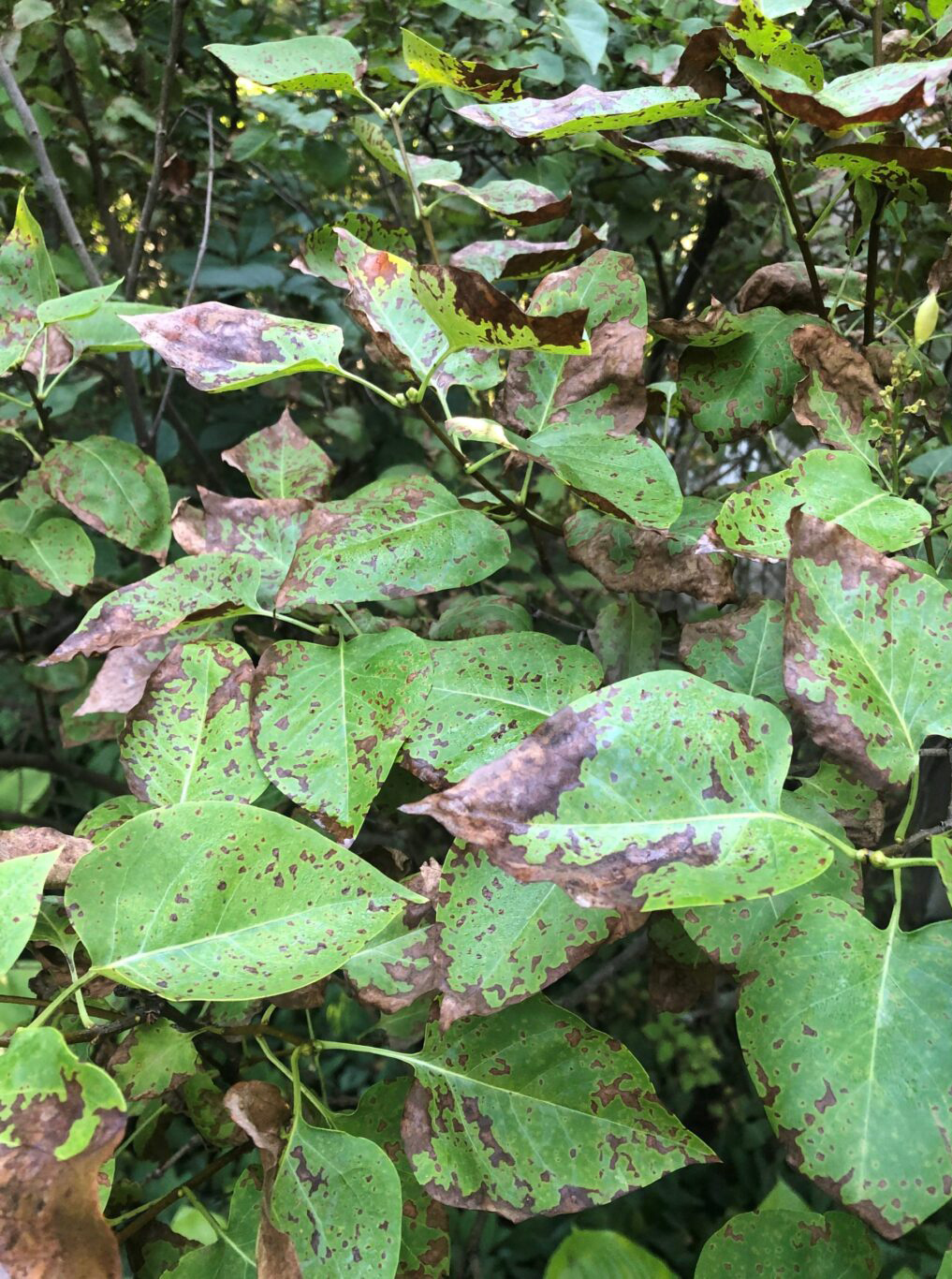The Devastating Effect of Prolonged Drought Conditions
Fall 2025

What I do know for sure is the devastating effect prolonged drought conditions have on our managed landscapes and woodlands. Trees and shrubs do have built-in mechanisms to withstand dry periods, and some plants are more drought-tolerant than others, but extended drought ultimately leads to plant mortality.
For a long time, I recommended watering new plants for one full year after installation. However, we’ve increasingly seen new plants die in their second or third year. As a result, I now advise watering into the third year to ensure plants establish a full root system.
Consider watering established plants as well when we experience 2–3 weeks of hot, dry weather.
Drought conditions weaken plants, making them more susceptible to a host of insects and diseases. Mites and cambium-boring insects are especially opportunistic, with populations that tend to explode during drought conditions.
My best advice? Water, water, water—and don’t wait too long. Soils become hydrophobic, and actually repel water. At that point, long, slow watering is required to rehydrate the soil effectively.
It’s raining today, September 7th, and it appears to be a good soaking rain—but when I went outside and kicked the mulch, it was still powder-dry just 1–2 inches below the surface. Don’t be fooled by a single day of rain during a drought—we’d need a solid week of steady rainfall to truly rehydrate the soil.
Be sure to water evergreens before we enter the winter months—broadleaf evergreens like rhododendrons in particular. Last fall, conditions were just as dry going into winter. We then experienced hard frost without adequate snow cover to insulate the soil, which caused severe winter kill on rhododendrons. You can prevent this with a planned watering program.
Consider purchasing a moisture meter—an inexpensive, easy-to-use soil probe that gives a quick and accurate reading of soil moisture levels.
We’ve received several calls about brown leaves on lilacs. This is typically bacterial blight, caused by damp conditions in the spring. In most cases, the lilacs aren’t dead. Look closely and you’ll likely see next year’s buds forming. You can also scratch the bark with your thumbnail—if it’s green underneath, the plant is still alive. Be sure to rake up and dispose of infected leaves, as they can serve as a source of inoculum next year. Also, consider proper pruning and a fertilization program going forward.
Finally, always consult a Massachusetts Certified Arborist. The natural world that surrounds our urban environment is in a constant state of change and uncertainty. Diagnosing and treating plants to ensure their long-term health and survival requires advanced knowledge and experience.
 Matthew R. Foti Landscape Design & Construction is a full service landscape design and construction firm. Established in 1977, Foti has maintained a 48 year commitment to high quality workmanship and personalized customer service. As a long time educator of aspiring Arborists and Horticulturalists, Matt’s small construction crew employs the most up to date planting and transplanting methods that will ensure the health and longevity of your landscape. Our continued education in a constantly changing industry combined with state of the art equipment has made Foti one of the leaders in the field. Contact Matt at 781-862-1010.
Matthew R. Foti Landscape Design & Construction is a full service landscape design and construction firm. Established in 1977, Foti has maintained a 48 year commitment to high quality workmanship and personalized customer service. As a long time educator of aspiring Arborists and Horticulturalists, Matt’s small construction crew employs the most up to date planting and transplanting methods that will ensure the health and longevity of your landscape. Our continued education in a constantly changing industry combined with state of the art equipment has made Foti one of the leaders in the field. Contact Matt at 781-862-1010.
